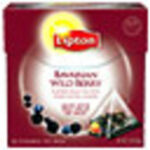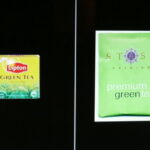Grandma Jo’ pours boiling water into a jug containing seven Lipton’s tea bags. After she allows ten minutes for infusion, she fishes them out with a wooden spoon and squeezes out every last drop of flavor. She reaches for the canister of sugar from the kitchen shelf and pours a cup or two into the hot water. She stirs for several minutes before the sugar dissolves completely and then dilutes the mixture with cold water.
The brew chills for an hour. Grandma Jo’ then removes the jug from the fridge and transfers its contents into an elegant glass pitcher, a family heirloom that predates the Civil War. She sets two tall glasses onto the counter and, after filling them with plenty of ice, adds the orangey-red beverage into each. Condensation collects in a puddle around the base of the pitcher as Grandma Jo’ smiles at her granddaughter’s first sip of sweet tea.
In Steel Magnolias the character Truvy Jones calls sweet tea the “house wine of the South.” Served at nearly every meal, the beverage is more than a summertime treat for Southerners; it’s a revered year-round staple, served right alongside fried catfish and biscuits with honey.
Iced tea itself has become a common thirst-quencher throughout America, so diverse in variety and taste – sweetened, unsweetened, green tea, black tea, flavored tea, organic tea, and hard tea being only a handful of choices – that it appeals to practically everyone. It wasn’t until the 19th century, however, that tea underwent its dramatic transformation from a hot beverage to the icy delight we now know and enjoy.
The Origins of Sweet Tea
In 1795 Andre Michaux, French explorer and botanist, introduced a variety of plants to the fields of South Carolina, including gardenias, azaleas, camellias and green tea, in hopes that the exotic flora would appeal to wealthy plantation owners. In Charleston, S.C. he grew the first crop of tea in the United States.
At the beginning of the nineteenth century, recipes for cold teas were popularized in both Britain and America. These brews, referred to as punches, were commonly made from green tea spiked with alcohol.
Patented in 1830, early refrigeration units, commonly referred to as iceboxes, played a major role in the growing trend to serve tea cold as did the production of pure ice for commercial distribution.
The cookbook The Kentucky Housewife, published in 1983, included a recipe for “tea punch,” the first recipe for chilled tea that appeared in the United States. The oldest sweet tea recipe was published forty years later in the community cookbook Housekeeping in Old West Virginia.
A century since its appearance in Southern crops, iced tea became known throughout the country thanks to the 1904 St. Louis World’s Fair. When Richard Blechynden could not sell his freshly brewed tea due to the oppressive summer heat, he decided to pour the tea through iced lead pipes, providing a tasty alternative to thirsty fairgoers and forever changing the way that Americans thought of their tea.
A Favored Flavor of Simplicity
There are many speculations as to why sweet tea became a Southern classic. At the end of the Civil War, many Southerners experienced poverty. Sweet tea – requiring only water, tea leaves and sugar – was not only cheap, but also readily available as the majority of cane crops were grown in the South.
Sweet tea, contradictorily, was also historically considered a luxury. Cold water was thought to be a delicacy, for until the icebox became a common household item, only the rich could afford ice. Tea, too, was regarded as a drink of the upper class. The fusion of ice and tea then became a symbol of wealth and extravagance.
Historians have a third theory. The conservative branch of Christianity that dominated the South frowned upon wine, beers and liquor. Sweet tea then became a common replacement for alcoholic beverages, and its consumption spread rapidly during the era of Prohibition.
Sweet Tea in Modern Times
The Southern tradition of sweet tea is undergoing a transformation. Increased health consciousness across the nation has tea companies promising its consumers the benefits of antioxidants and added vitamins. Furthermore, companies are also decreasing the use of natural and artificial sweeteners.
Does this foreshadow the tragic end of sweet tea? Hardly. Nowadays one can find bottled teas well-stocked in the refrigerators of every grocery store and even behind the counters of fast food restaurants. In 2006 McDonald’s introduced sweet tea to its menu in 3,000 locations throughout the South.
Perhaps in the not-so-distant future, Yankees, too, will be smacking their lips together inside greasy diners as waitresses with beehive hairdos infinitely replenish tall glasses of ice with the cherished Southern delight known as sweet tea.







